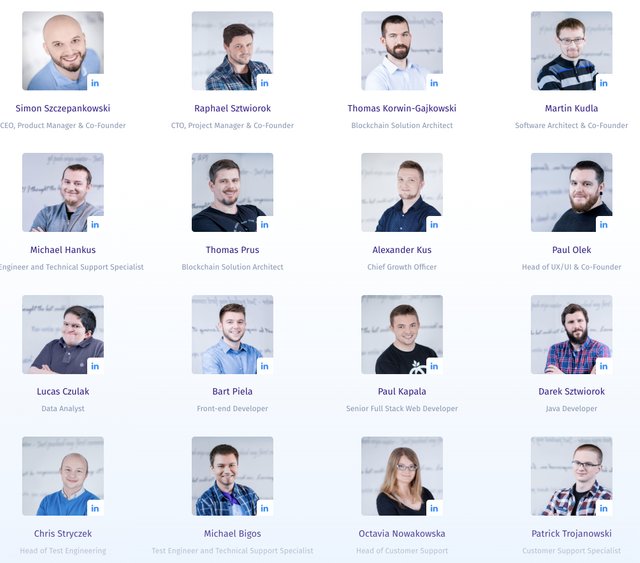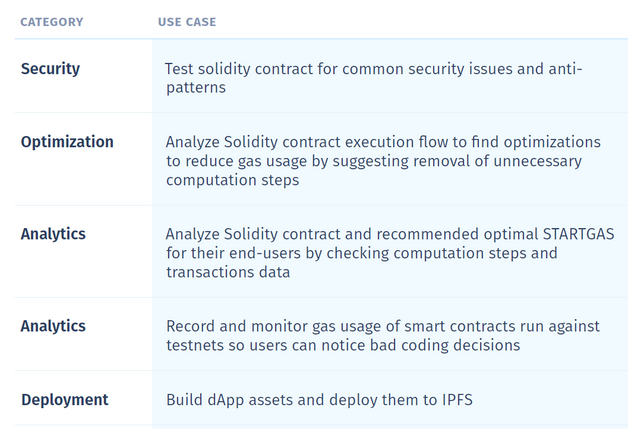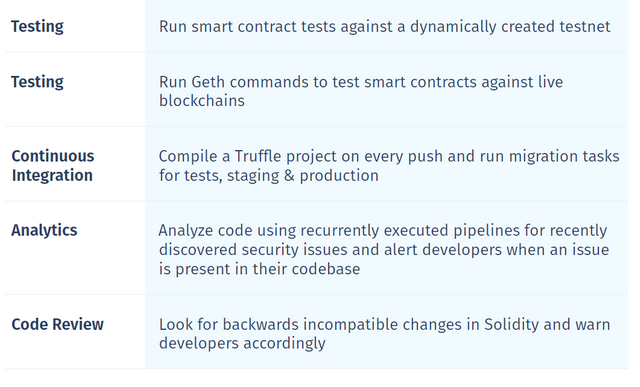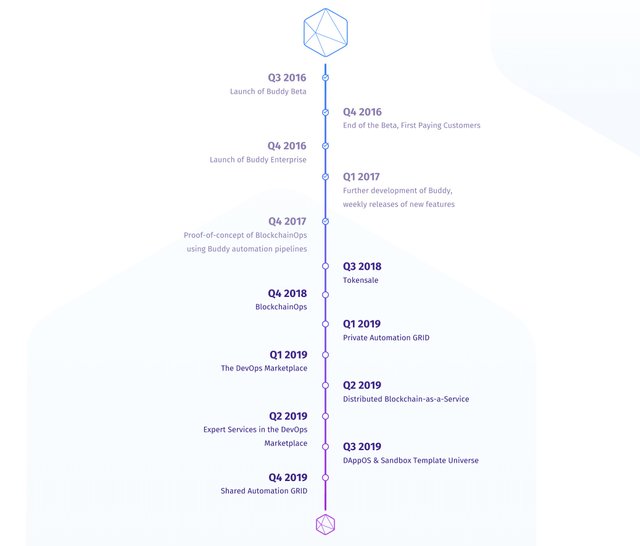INTRODUCTION
The foremost innovative invention over the past few years is the internet which has undoubtedly become a very important part of lives of 21st century humans. Following closely is the invention of blockchain and its accompanying innovative infrastructure. The advent of the blockchain technology has made a lot of possibilites, from the introduction of digital currencies, the possibility of a p2p transfer of funds, the facilitation of a decentralized cloud storage as can be seen with IAGON, and also to the enablement of the internet as seen with BANDZ.
Nevertheless, many platforms such as: blogging, social networks and media, and all existing websites depends solely on the internet. This and so many other internet use cases are the reasons why we can actually say that the internet is limitless as to what it can achieve and so therefore is held of great value in our present world today
For programmers and developers however, the internet serve as a link for effect utilization of softwares. Softwares in turn act as the engine room that facilitates the applications present in a computer.
Unfortunately, it is seen that there is an increase in the production of newer models and types of computing gadgets as can be seen in phone producers such as apple and samsung, and even desktop and laptop producer like Helwelt Packard(HP) and DELL. These companies are always at the top every year, the reason being that they always deliver when it comes to durable and high spec devices. To keep up with efficient delivery and production of these new gadgets, these calls for fast develpment of softwares by their developers as these devices works with softwares from their operating systems down to their software applications. Hence, they therefore have an increased demand for for software which can only be satisfied if there is an efficient team of developers.

There are several stages a software passes through for it to bu fully developed, firstly the specific requirement of the customer is collected, based on that the design of the software is made in the paper, after all this paperwork, the actual development or coding is done. After the software is developed and deployed, then comes the security checking and test cases, wherein the functionalities of the software are checked along with the security features. Once the software passes this stage, then it is delivered to the customer and the customer gives the feedback and requests for any changes, this goes on till the software is used by the customer and this is known as the maintenance phase of the software development lifecycle.
The software development requires utilization of several development tools and platforms for attaining the technical objectives, there are many options available for performing a particular task. Such a high diversity in the developmental platforms quite often leads to a major issue while integrating the modules of a software. Not only are their much issues in the conventional way of software development but also a great range of diversity in the way these software are delivered to the customers or made available for the public use.
The software development industry has also been operating under centralized conditions over the last few years and this is not favorable to developers and programmers. This centralized state of the industry makes their job very tedious because they are made to work in a pressured condition. They are given deadlines for the completion and submission of certain jobs and this does not make their job fun filled as it should.
 Blockchain and its technology has been marked to bring and extensive solution to the existing ones faced by developers. But sad to say though, blockchain in itself posseses some loopholes which also restricts and limits its actions. That is not our concern for now.
Blockchain and its technology has been marked to bring and extensive solution to the existing ones faced by developers. But sad to say though, blockchain in itself posseses some loopholes which also restricts and limits its actions. That is not our concern for now.

Say hello to Buddy!! Buddy was conceived because of the urgent the need to reduce the stress that developers go through, increase the speed of development, and create additional features which will be an upgrade to the existing systems. All these will give maximum satisfaction to the customers, the developers, and the community.

WHAT Is BUDDY?
Buddy is a decentralized application development and deployment automation platform which runs on blockchain. Its aim is to build decentralized softwares with blockchain that will be very easy on the road and and easy to operate.Buddy puts application development on autopilot and makes building apps scalable, creating a decentralized DevOps Marketplace and Automation GRID that challenges how today’s developers build, test & deploy their apps.Buddy was designed to run many tasks with repetition, all while having no interaction with the user
Buddy take charge of all the boring tasks that developer are faced with in blockchain application development. This therefore gives developers with more time and opportunity to concentrate on their core product as well as it’s design and user interface, while Buddy helps deploy and maintain their DApps!
A BRIEF HISTORY OF BUDDY
The Buddy group was founded in 2007 while bootstrapping springloops, a popular subversion hosting platform with deployment tools for web developers. The earning secrets, experience and new technology trends led to the invention of buddy.
Buddy was founded in 2015 with a mission to vertically apply automation to the application development process, so that developers can focus on creative challenges, not wasting time on duty repetition.
Buddy was released in 2016 to a large positive response from the community
Quickly became a partner of Google, GitHub, Microsoft and other key players in its ultimate quest to help developers deliver faster & better product quality.

Since 2017, the buddy has been constantly evolving.
THE BUDDY SOLUTIONS
In its quest to make development job as easy as possible for deveopers, buddy has put in place some solution packages. These solutions as discussed below:
The DevOps Marketplace
So far Buddy has created more than eighty automation actions that can be used to help people deploy and develop software. This makes the building and testing of applications a simple process. The platform is also open to actions developed by third parties.These third party persons can also mearn cool cash from the market place because buddy has made it possible for them to make profit by taking monetary charges for the solutions that they submit to the DevOps Marketplace, at the same time allowing them to publish plugins for free. Similar to the Google Play store, the DevOps marketplace will provide access to these actions which can be paid or free. There is no limit to the number of possible actions that may be offered in the marketplace. The marketplace will be an integral part of the whole Buddy ecosystem.
Some third party actions offerd by the buddy ecosystem are given in the table below:

Still talking about the marketplace is SECURIFY. Securify is a free service provided by Software Reliability Lab. It allows for an
automated analysis of any kind of Ethereum contract for critical security
vulnerabilities and insecure coding through a website. An example is shown below:

Securify will be published as a dedicated action to the DevOps Marketplace so that anyone will be able to add it to their automation pipelines and report issues as soon as they are introduced into the codebase. This will drastically increase code quality and reduce shipment time by discarding unnecessary code rewrites that, when done late, take much
more time and require additional testing.
The marketplace content curation will be done by a dedicated Decentralized Autonomous Organization run by Buddy token holders. This curation is done in order to encourage innovations and support talented developers, only quality and original contents will be accepted into the marketplace while copied submissions will be discarded. The developers who pass the quality test of the curators, in return, will help in the
advancement of the Blockchain community.

Private Automation GRID

The GRID is a network of instances and the user can choose to run the Buddy instances either using a private cloud, their own infrastructure, or IaaS. Since business enterprises cannot rely on distributed computer resources, Buddy creates the decentralized aspect of the platform on top of infrastructure that is well trusted. Buddy can make use of providers such as Google Cloud, Amazon Web Services, and others.

Shared Automation GRID
The idea behind the Shared Automation GRID is to take the high-intensive automation tasks to a network of Buddy instances run by users with available resources. The shared automation GRID is for when trusted infrastructure is not required. This allows home users to provide computing resources for people who need them. A compute unit will need to meet minimum specifications of 2 vCPUs, 4GB SSD storage, and 2GB RAM in order to participate. Storage is needed only for task performing and once compete, the storage is no longer needed and results are transferred to the person who made the request. One example of how people may use the private vs shared GRID is that the private GRID may be used for building of applications, and the shared GRID may be used to perform tests against it. There are also many other possibilities for the shared GRID. The reward for sharing computing resources is paid in Buddy tokens once the task is finished. A requester may set a desired amount they are willing to pay. Suppliers can also set the minimum price they are willing to accept. As a safety measure, only actions that are available in the DevOps marketplace may be used for the shared GRID. These actions are open source and reviewed by curators of the marketplace.

It would interest you to know that our new buddy buddy provides automation to blockchain-based projects. Buddy does this through the following means:
BlockchainOps
BlockchainOps allows for the use automated scripts by blockchain developers to aid them in the efficient development of their blockchain projects. The automated scripts includes, maintainenance and deployment scripts. With these scripts, blockchain developers can use the time spent on repetitive task to focus on other parts of the blockchain projects and also make possible breakthroughs.
BlockchainOps already has EOS support, and the team at buddy is working tirelessly and vigorously to ensure that other blockchains such as NEO, ICX, TRX, NEM, ETH, etc are supported.
dAppOS
dAppOs is an environment that allows for the development of dApps. dAppOs can be regarded as the bootstrap of blockchian-based projects. dAppOs is similar to Sandboxes, because it can be extended to external services such as MySQL, Redis, Mongodb etc.
Uses of dAppOS
As a development, staging or preview environment:
dAppOs can be used as an environment for testing and previewing dApps. dAppOs can either be a standalone, or it can be assigned to branches. When it is assigned to branches, each branch gets an instance of dAppOs along with the services required attached. With this, an automated fully-isolated stack is in sight for every branch.
Training tool:
dAppOs can be used as a training tool in blockchain training. With dAppOs, the time wasted on installing and configuring bunches of dependencies and stacks just to prepare the environment is saved, and this time can be converted to just focusing on the real training required.
A template universe is created:
With dAppOs, a template universe is created. This template universe can be seen as a marketplace for SandBox & dAppOs templates, which are created by third party developers.
dAppOs Swarms:
Recall the shared automation grid. With the shared automation grid, thousands of dAppOs (dAppOs swarms) can be spun around the world, and this dAppOs swarm would only exists for the time needed to execute a task. With this, cost is reduced, and the execution of tasks are effective and efficient.
Distributed Blockchain as a Service:
Buddy has been turned blockchain into a service that is readily available to everyone. With this, blockchain based solutions can be designed, tested and deployed effectively and efficiently, using distributed ledgers.
WHY CHOOSE BUDDY AS A DEVELOPER?
While other supercomputers may be more focused on single jobs that are requested by a user who has large computing needs. Buddy is designed to run many tasks with repetition, all while having no interaction with the user.
Supercomputers may allow all kinds of devices, including smart phones and tablets. Some tasks may terminate with not enough resources, that is why Buddy has set the minimum requirements.
Buddy makes use of the private automation GRID, so work never leaves their own private network.
Buddy executes tasks on the private automation GRID and this is done off chain. This way it is instant and without token fees.

)
THE BUD TOKEN AND ECONOMY
The utility token used by the platform is called the BUD token, and it is based on Ethereum. The token ensures security, transparency, economic incentives, and a governance source. There is a token sale being offered for anyone who is interested in this platform. It is currently scheduled to begin in August and end in October.

MEET THE BUDDIES
The masterminds behind this platform are Anant Singh, the Head of Expansion, Aditya Singh, Head of Marketing, and Chen Si Yuan, Head of Community Engagement. Other members include Simon Szczepankowski, CEO, Product Manager & Co-Founder, Raphael Sztwiorok, CTO, Project Manager & Co-Founder and Thomas Korwin-Gajkowski, the Blockchain Solution Architect. These members were the ones who brought out this fantastic blockchain facility.


!)
ROADMAP
CONCLUSION
There is much scope and necessity for a platform like Buddy, which reduces the time of software development by providing several automated deployments and testing steps. This could be a boon to SMBs in the IT sector as it would reduce the production cost and would also increase the profitability of the software development. This platform would be of great benefit to coding enthusiasts and developers and would assist them throughout the development of a software application.

For visual information watch the video below:
More Information & Resources:






















 )
)



 !)
!)